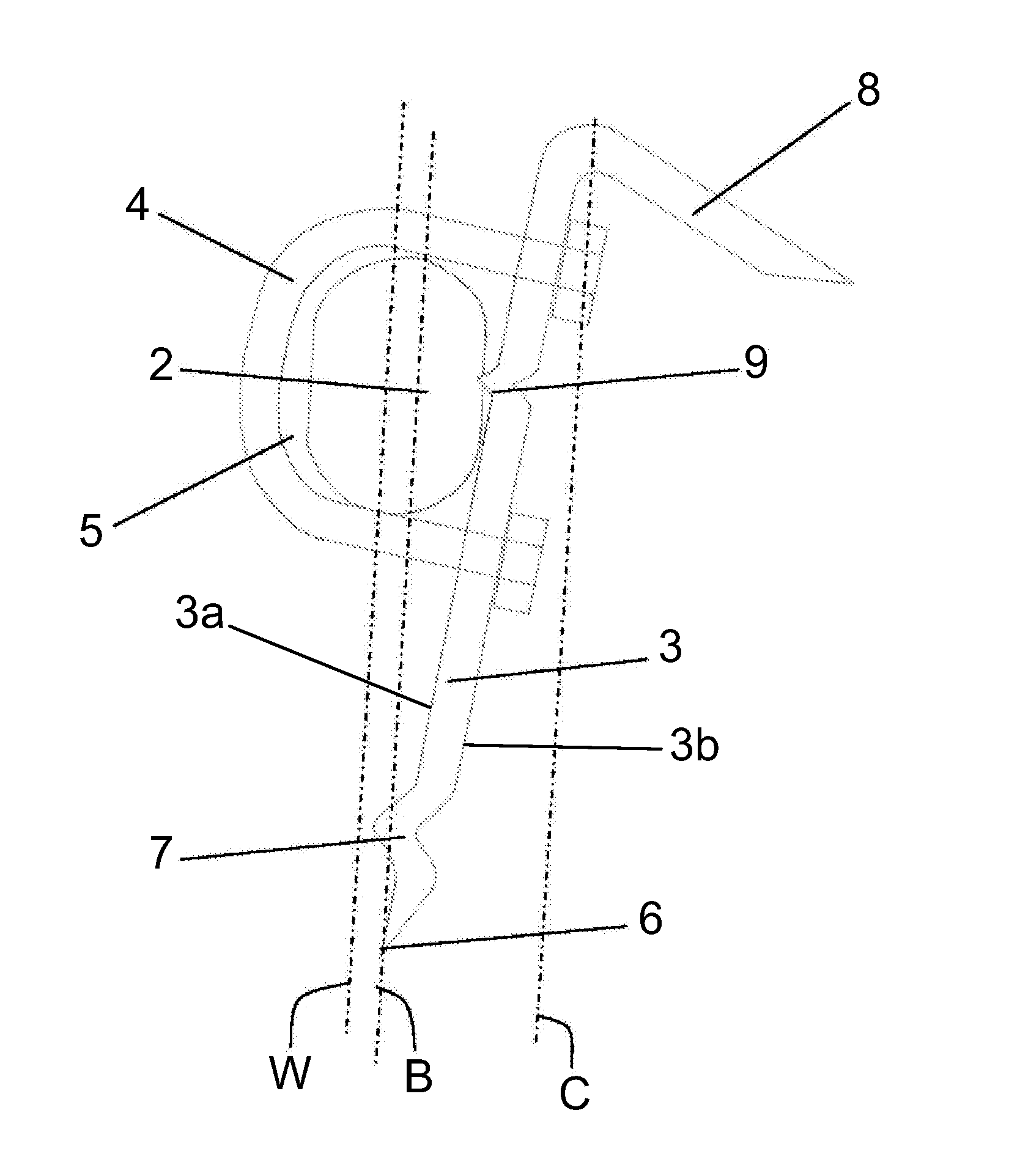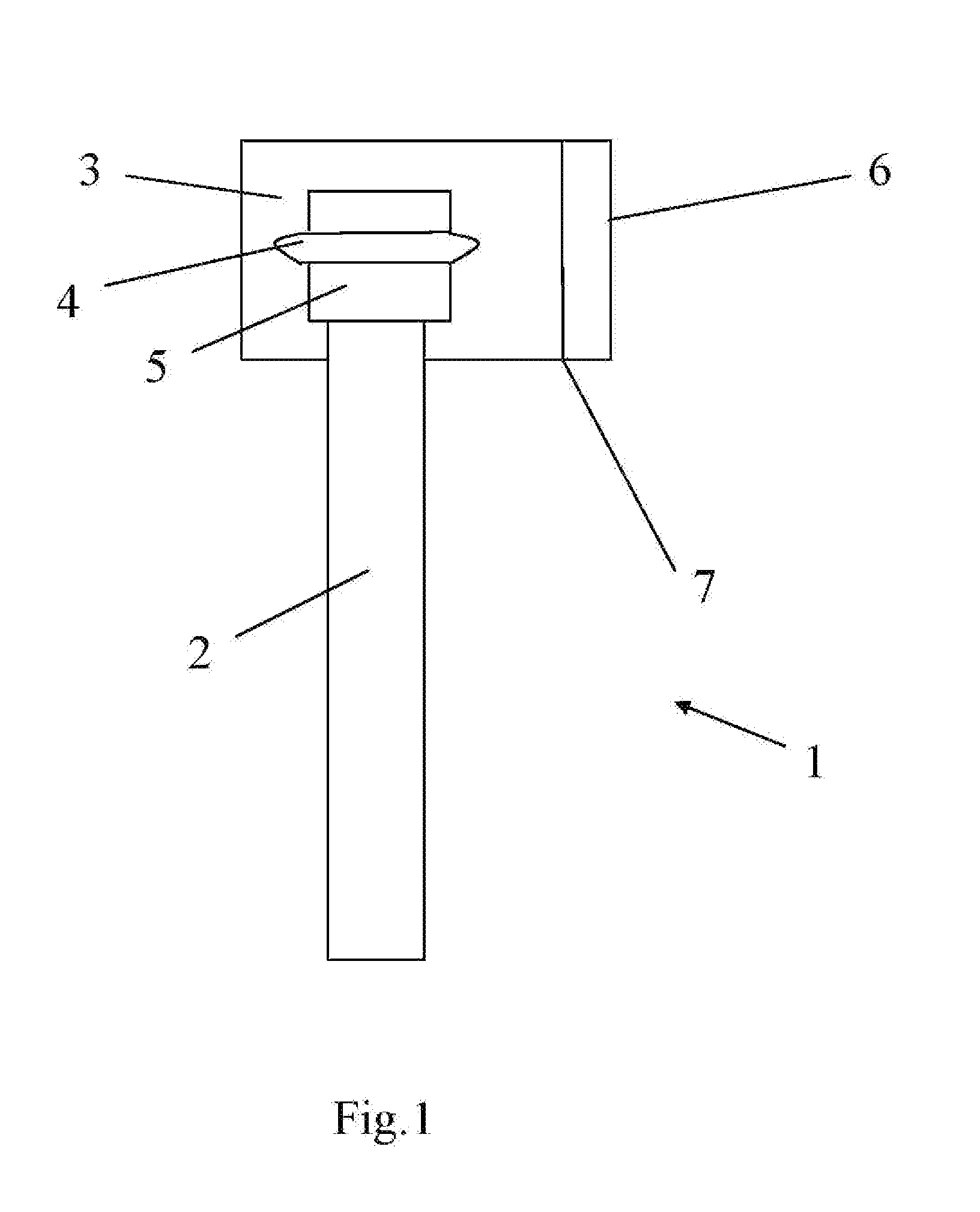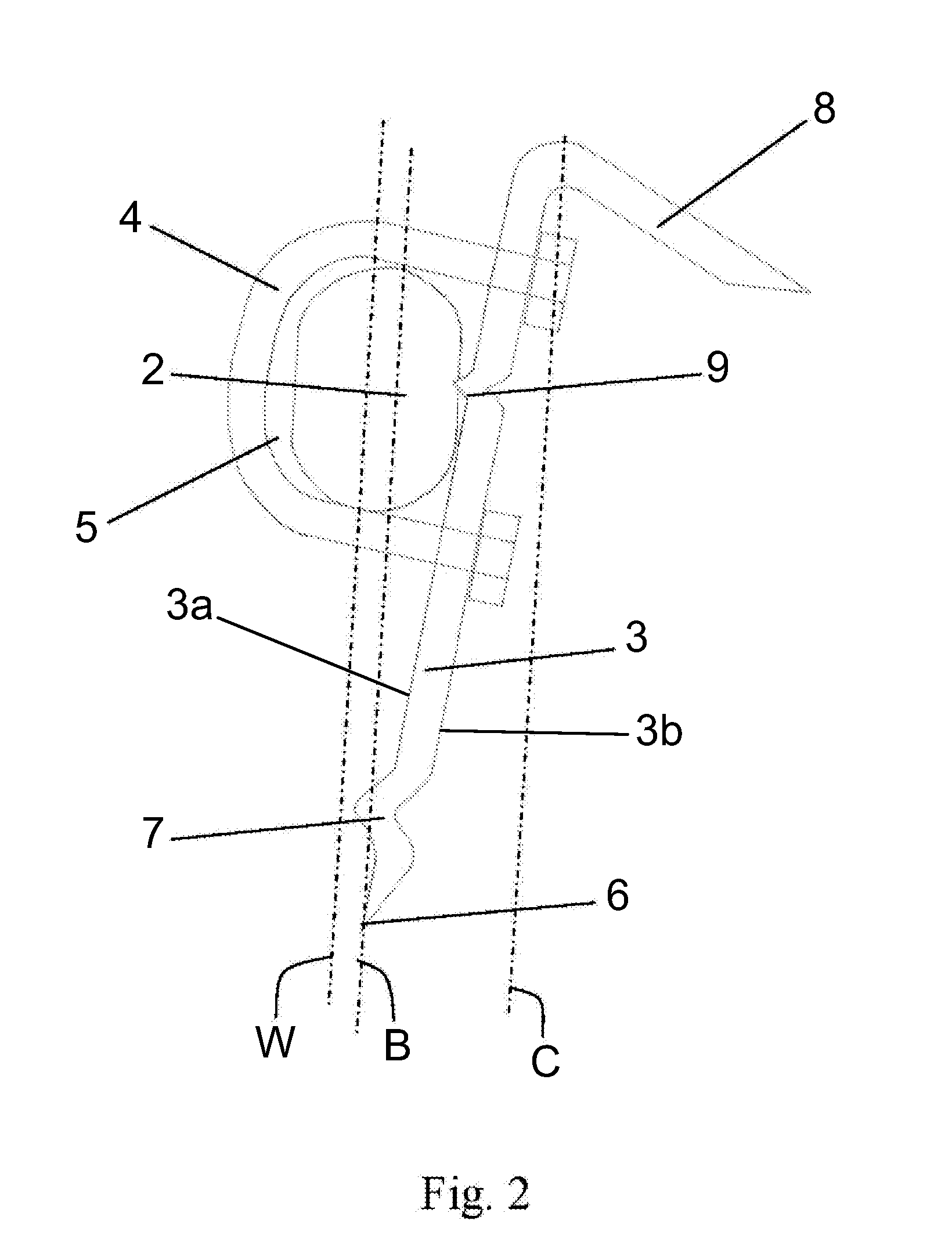Axe
- Summary
- Abstract
- Description
- Claims
- Application Information
AI Technical Summary
Benefits of technology
Problems solved by technology
Method used
Image
Examples
Embodiment Construction
[0030]The FIG. 1 shows an axe 1 that comprises a handle 2 which the handle 2 is attached to the blade 3 with a mounting arrangement 4. The mounting arrangement 4 may also be other than shown in the figure, for example a bolt or several bolts going through the handle and the blade. In this embodiment of the invention the mounting arrangement 4 is a U-bolt. In this preferred embodiment of the invention the portion of the handle 5 attached to the blade 3 is of a different shape than the rest of the handle 2. The blade 3 has a cutting edge 6, a first stop element 7 and a second stop element (not shown in the figure). The portion of the handle 5 which is of a different shape than the rest of the handle is preferably covered with a plastic material or having a plastic sleeve which protects the handle from wearing. The sleeve or the covering may preferably extend to the lower part of the handle too so that all the parts that may hit the wood when missing the target while splitting the wood...
PUM
 Login to View More
Login to View More Abstract
Description
Claims
Application Information
 Login to View More
Login to View More - R&D
- Intellectual Property
- Life Sciences
- Materials
- Tech Scout
- Unparalleled Data Quality
- Higher Quality Content
- 60% Fewer Hallucinations
Browse by: Latest US Patents, China's latest patents, Technical Efficacy Thesaurus, Application Domain, Technology Topic, Popular Technical Reports.
© 2025 PatSnap. All rights reserved.Legal|Privacy policy|Modern Slavery Act Transparency Statement|Sitemap|About US| Contact US: help@patsnap.com



